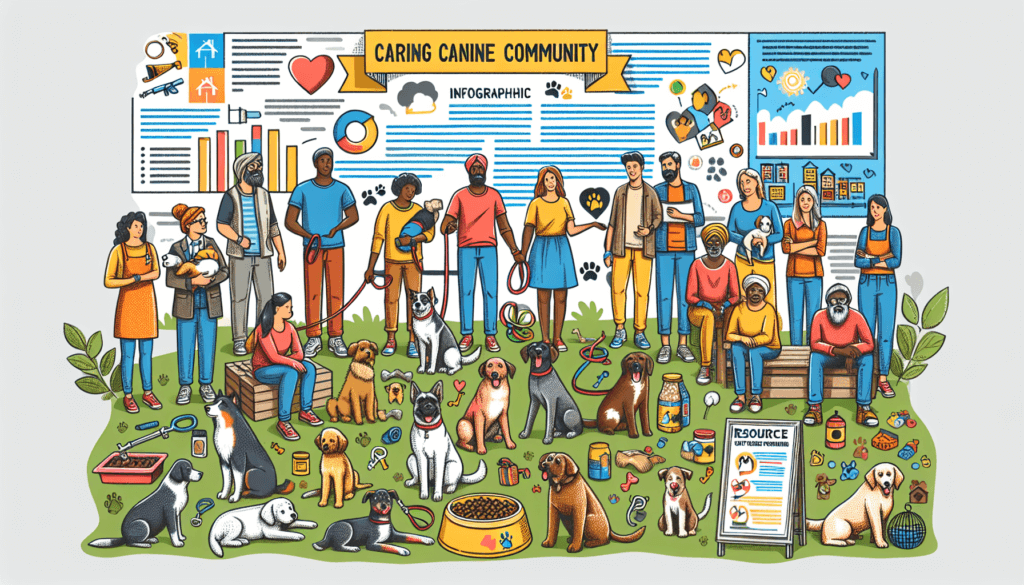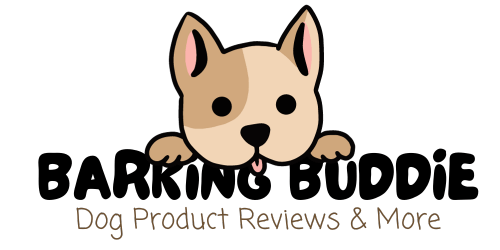Imagine a world where dog lovers unite, creating a supportive network dedicated to the well-being of our four-legged friends. In this article, we will explore the power of building a dog community support network and how it can positively impact the lives of both humans and dogs alike. From sharing informative resources to organizing meetups and providing emotional support, this article will inspire you to take the initiative in creating a strong and compassionate dog-loving community in your neighborhood. Get ready to embark on a heartwarming journey that celebrates the bond between humans and their furry companions.

1. Importance of a Dog Community Support Network
A dog community support network plays a crucial role in enhancing the well-being of both dogs and their owners. The benefits of such a network are numerous and far-reaching. By coming together as a community, dog owners can provide support, guidance, and resources to one another, fostering a sense of belonging and unity. This support network not only serves as a valuable resource for dog-related advice, but it also creates a platform for dog owners to share their experiences, celebrate successes, and seek solace during challenging times.
1.1 Benefits of a Dog Community Support Network
The benefits of a dog community support network are vast. One of the key advantages is the opportunity for dog owners to connect with like-minded individuals who share their passion for dogs. This sense of community creates a support system where members can openly discuss their experiences, exchange advice, and seek emotional support. Furthermore, such a network can facilitate the formation of lifelong friendships, providing companionship not only for the dogs but also for the owners themselves.
Additionally, a dog community support network can be a valuable source of knowledge and expertise. The collective experience of the members can serve as a learning platform where dog owners can access guidance on various aspects of dog care, training, and behavior. Whether it’s seeking recommendations for dog-friendly establishments or advice on health concerns, this network provides a wealth of information that can greatly benefit dog owners.
1.2 Impact of a Dog Community Support Network
A dog community support network has a profound impact on the overall well-being of dogs and their owners. Through the establishment of strong relationships, dogs are given the opportunity to socialize and interact with other dogs, improving their social skills and overall behavior. Additionally, the emotional support provided by the network helps dog owners navigate the challenges and responsibilities of dog ownership, reducing stress and promoting mental well-being.
Moreover, by fostering a sense of community and unity, a dog community support network can engender a safer and more inclusive environment for both dogs and their owners. It promotes responsible dog ownership and encourages adherence to local regulations and laws. This, in turn, can lead to improved relationships between dog owners and the broader community, reducing instances of conflict and serving as a testament to the positive impact dogs can have on society.
2. Building a Dog Community Support Network
Building a strong and cohesive dog community support network requires careful planning and execution. Here are two important steps in the process:
2.1 Identifying Local Dog Owners
The first step in building a dog community support network is identifying local dog owners. This can be done through various methods such as social media groups dedicated to dog enthusiasts, local dog shows, or even word-of-mouth referrals. Creating a comprehensive database of dog owners in the community helps establish a foundation for communication and collaboration.
2.2 Establishing Communication Channels
Once the local dog owners have been identified, it is important to establish effective communication channels to connect and engage with them. This can be achieved through email lists, social media groups, or dedicated online forums. Creating a platform where members can share information, ask questions, and seek support is essential in building a thriving and inclusive dog community.
3. Organizing Events and Activities
Organizing events and activities is a key component of a dog community support network. It provides opportunities for dog owners to come together, strengthen their bond, and share their love for dogs. Here are two popular types of events and activities:
3.1 Dog Walks and Playdates
Organizing regular dog walks and playdates not only allows dogs to exercise and socialize but also provides an opportunity for dog owners to form connections. These events can be held in local parks or designated dog-friendly areas, providing a safe and enjoyable space for both dogs and their owners. Dog walks and playdates create a sense of community and enable dog owners to exchange tips, share training techniques, and discuss any challenges they may be facing.
3.2 Training and Education Sessions
Hosting training and education sessions is another valuable aspect of a dog community support network. These sessions can cover a variety of topics such as basic obedience training, behavior management, or even specialized training for specific breeds. By providing access to experienced trainers or knowledgeable volunteers, dog owners can enhance their understanding of dog behavior and training techniques, thus promoting responsible dog ownership.
4. Providing Financial Assistance and Resources
Financial constraints can sometimes pose challenges for dog owners, especially when it comes to accessing essential resources or dealing with unexpected veterinary expenses. A dog community support network can play a crucial role in providing financial assistance and resources. Here are two ways to address this:
4.1 Fundraising for Dog Community Support
Organizing fundraising events or campaigns specifically aimed at supporting dog owners in need can make a significant impact. These initiatives can involve a variety of activities such as charity walks, online crowdfunding, or partnering with local businesses to donate a portion of their sales to the cause. By pooling resources and raising funds collectively, the dog community support network can provide financial assistance to those who require it.
4.2 Connecting Dog Owners with Financial Resources
In addition to fundraising efforts, connecting dog owners with existing financial resources is equally important. By collaborating with local organizations or businesses that offer financial aid for veterinary care or access to affordable dog supplies, the dog community support network can ensure that dog owners have the necessary resources to provide adequate care for their pets. This can include sharing information about low-cost vaccination clinics, discounted spay/neuter programs, or pet food banks.

5. Offering Emotional Support and Resources
Emotional support plays a critical role in a dog community support network. Supporting dog owners during both joyous moments and difficult times fosters a sense of camaraderie and unity. Here are two ways to offer emotional support:
5.1 Establishing a Dog Support Hotline
Creating a dedicated dog support hotline provides dog owners with a direct line of communication to seek guidance, advice, or simply have a sympathetic ear to listen. This hotline can be staffed by trained volunteers or professionals who can offer emotional support, resources, and referrals to relevant services when needed. By providing an avenue for dog owners to voice their concerns or share their experiences, the network can serve as a pillar of emotional support within the community.
5.2 Creating a Dog Community Support Website
A dog community support website serves as a centralized hub for information, resources, and community engagement. It can include forums for members to connect and discuss various topics, a blog featuring educational articles and training tips, as well as a directory of local dog-friendly businesses and services. The website can also highlight success stories, upcoming events, and information on how to get involved in supporting the dog community. By providing these resources online, the network becomes accessible and available to a wider audience.
6. Collaborating with Local Businesses and Organizations
Collaborating with local businesses and organizations is key to fostering stronger ties within the dog community and expanding the network’s reach. Here are two avenues for collaboration:
6.1 Partnering with Veterinarians and Animal Shelters
Forming partnerships with veterinarians and animal shelters can provide numerous benefits to the dog community support network. Veterinarians can contribute their expertise by offering educational workshops or discounted services for network members. Animal shelters can collaborate by providing adoption resources, organizing adoption events, or even partnering in fundraising efforts. These collaborations strengthen the network’s reputation and ensure that dog owners have access to reliable and trusted resources for the well-being of their pets.
6.2 Engaging Local Pet Supply Stores
Engaging with local pet supply stores can create mutually beneficial relationships within the community. By partnering with these stores, the dog community support network can organize educational events, such as workshops on choosing the right dog food or selecting appropriate toys. Furthermore, local pet supply stores can offer exclusive discounts or loyalty programs for network members, enhancing the overall support and accessibility of essential dog supplies.

7. Advocating for Dog Welfare and Legislation
Advocacy plays a vital role in ensuring the welfare and rights of dogs within the community. By advocating for improved dog-friendly policies and raising awareness on dog welfare issues, a dog community support network can bring about positive change. Here are two strategies for advocacy:
7.1 Raising Awareness on Dog Welfare Issues
Educating the community about dog welfare issues is a powerful way to create empathy and inspire action. The dog community support network can utilize various channels such as social media, community events, or newsletters to raise awareness on topics such as responsible breeding practices, the importance of spaying and neutering, or the benefits of adoption. By disseminating educational materials and organizing awareness campaigns, network members can educate the broader community and encourage responsible dog ownership.
7.2 Lobbying for Improved Dog-Friendly Policies
Lobbying for improved dog-friendly policies is another powerful method of advocacy. The network can work together to identify areas where changes are needed, such as advocating for more dog parks, advocating against breed-specific legislation, or pushing for better enforcement of existing animal welfare laws. By working with local government representatives, attending town hall meetings, and forming alliances with other advocacy groups, the dog community support network can bring about meaningful change and ensure that the needs and rights of dogs are being addressed.
8. Promoting Responsible Dog Ownership
Promoting responsible dog ownership is essential for the well-being of dogs and the harmony within the community. Through education and engagement, a dog community support network can help all dog owners understand their responsibilities and make informed decisions. Here are two ways to promote responsible dog ownership:
8.1 Conducting Dog Training Workshops
Conducting regular dog training workshops is a valuable educational initiative. These workshops can cover basic obedience training, leash manners, or addressing common behavior issues. By providing dog owners with the necessary skills and knowledge to train their dogs effectively, the network promotes responsible ownership and improves the overall behavior and well-being of the dogs in the community.
8.2 Educating the Community on Responsible Dog Ownership
Educating the broader community on responsible dog ownership is equally important. The dog community support network can organize community outreach events, distribute educational materials, or collaborate with local schools and community centers to deliver presentations. By spreading awareness about responsible dog ownership topics such as proper vaccination, licensing, and waste management, the network encourages the community to be mindful of their responsibilities and take proactive measures to ensure the welfare of their dogs.

9. Developing a Volunteer Network
A strong volunteer network is the backbone of a thriving dog community support network. Volunteers contribute their time, skills, and passion to help the network grow and provide support to fellow dog owners. Here are two steps to develop a volunteer network:
9.1 Recruiting and Training Volunteers
Recruiting volunteers can be done through various channels, including social media, community events, or word-of-mouth referrals. It is important to assess the skills and interests of potential volunteers to match them with appropriate roles within the network. Conducting training sessions to familiarize volunteers with the network’s vision, objectives, and activities is key to ensuring a cohesive and effective volunteer team.
9.2 Assigning Volunteer Roles and Responsibilities
Once volunteers have been recruited and trained, it is important to assign them specific roles and responsibilities within the dog community support network. This can include tasks such as organizing events, managing communication channels, fundraising efforts, or providing emotional support. Clearly defining each volunteer’s role and expectations ensures that tasks are completed efficiently and allows volunteers to contribute their skills and interests effectively.
10. Evaluating and Adapting the Dog Community Support Network
Continuous evaluation and adaptation are essential for the growth and sustainability of a dog community support network. Regular assessment of the network’s initiatives, effectiveness, and impact allows for improvements and adjustments to be made. Here are two steps in the evaluation process:
10.1 Seeking Feedback from Dog Owners
Seeking feedback from dog owners is a critical part of the evaluation process. Conducting surveys, hosting focus groups, or even holding informal discussions can provide invaluable insights into the strengths and weaknesses of the network. Feedback can help identify areas that require improvement or highlight initiatives that have been particularly successful.
10.2 Assessing the Effectiveness of Support Initiatives
Evaluating the effectiveness of support initiatives is essential to ensure that resources are allocated efficiently and that the network’s objectives are being met. This can be done through data collection, such as tracking attendance at events, monitoring website traffic, or conducting post-event surveys. By analyzing this data, the network can identify which initiatives are most impactful and make informed decisions about future activities and resource allocation.
In conclusion, creating a dog community support network is a powerful way to enhance the well-being of dogs and their owners. Through building strong relationships, organizing events, providing financial and emotional support, collaborating with local businesses and organizations, advocating for dog welfare, promoting responsible dog ownership, developing a volunteer network, and evaluating the network’s effectiveness, the dog community can come together as a unified and supportive force for the betterment of dogs and their owners.



